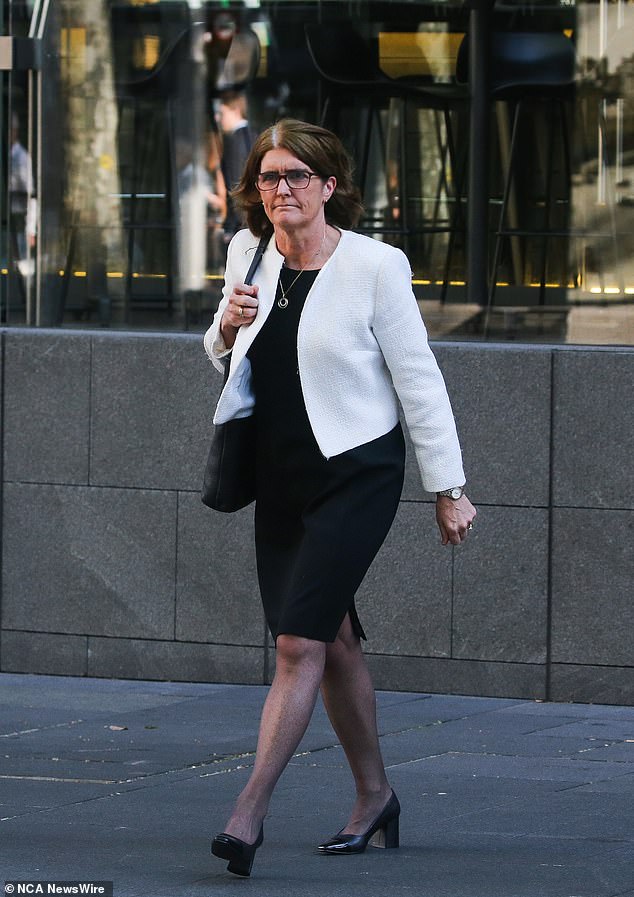Anthony Albanese’s cost of living measures could lead to an interest rate rise within weeks
Anthony Albanese’s economic balancing act appears to be unraveling as top economists warn that a spike in inflation could lead to another rate hike – the fourteenth in two years.
Inflation rose to 4 percent in the year to May, compared with 3.6 percent the month before. This prompted NAB analysts to warn that a rate cut could be delayed until after May next year.
A cocktail of rising energy bills, higher petrol prices and sky-high rents have helped push consumer price growth to a six-month high – well above the Reserve Bank’s target of 2 to 3 per cent.
Analysts from UBS and Deutsche Bank have now joined Judo Bank chief economist Warren Hogan to predict a 14th rate hike in August, according to The Australian.
The forecast could be a crushing blow to embattled mortgage holders who endured 13 rate hikes between May 2022 and November 2023.
Anthony Albanese’s economic balancing act appears to be taking a nosedive as top economists warn a rise in inflation could lead to another rate hike

NAB analysts have warned that any rate cut could be delayed until after May next year in a bid to keep inflation low. Pictured is a shopper at Coles
The Prime Minister is expected to discuss his government’s cost of living and economic management measures in parliament on Thursday morning.
But some economists warn Albanese’s cost-of-living measures risk keeping inflation high and hurting struggling Aussies’ pockets.
“Governments are throwing a lot of money at the symptoms of the cost of living, but that’s exacerbating the cause of it. And the cause is too many dollars chasing too few things,” independent economist Chris Richardson told the publication.
‘Governments have left the field in the inflation battle. We fight inflation with one hand.’
In news that will spark anger in the hearts of struggling households, Mr Richardson warned as much “Mortgage relief is still a long, long way away.”

Controversial mortgage holders endured thirteen interest rate increases between May 2022 and November 2023
EY chief economist Cherelle Murphy also said another rate hike is now a strong possibility when the RBA meets again in August.
“The monthly consumer price index has shocked financial markets, which are now once again seriously considering the possibility of another rate hike from the Reserve Bank at its next meeting,” she said.
The bad news came just a week after RBA Governor Michele Bullock confirmed that a rate hike was more likely than a rate cut, with the cash rate unchanged this month at a 12-year high of 4.35 percent.
“Yes, the board discussed the arguments for raising interest rates during this meeting,” she told reporters.
‘No, no cuts have been considered.’

RBA Governor Michele Bullock (pictured) confirmed that a rate increase was more likely than a rate cut
Despite fears that Labor’s measures to cut the cost of living, such as the $300 energy bill rebate and phase three tax cuts, are fueling inflation, Albanese will argue in parliament on Thursday that ‘inflation has fallen’ .
In a speech at a CEDA conference, he will boast that his policy was introduced “so that it takes the pressure off people, without putting pressure on inflation.”
“Inflation has come down. Annual real wage growth is back,” Mr Albanese will say.
“Unemployment remains at its lowest level in almost 50 years. And the gender pay gap is at a record low. My colleagues and I are proud of this record.”
The monthly inflation measure is now back to its highest level since November 2023, when the Reserve Bank last raised interest rates.
But Finance Minister Jim Chalmers said the monthly consumer price index was volatile and therefore less reliable than the quarterly inflation measure.
“As we have said before, the monthly CPI number is volatile and can jump around because not every item in the shopping cart is updated every month,” he said Wednesday.
‘Today’s annual figure was lifted by fuel prices and the impact of base effects, which are the result of a large drop in month-on-month inflation in May 2023, which impacted the May 2024 annual figure. ‘
